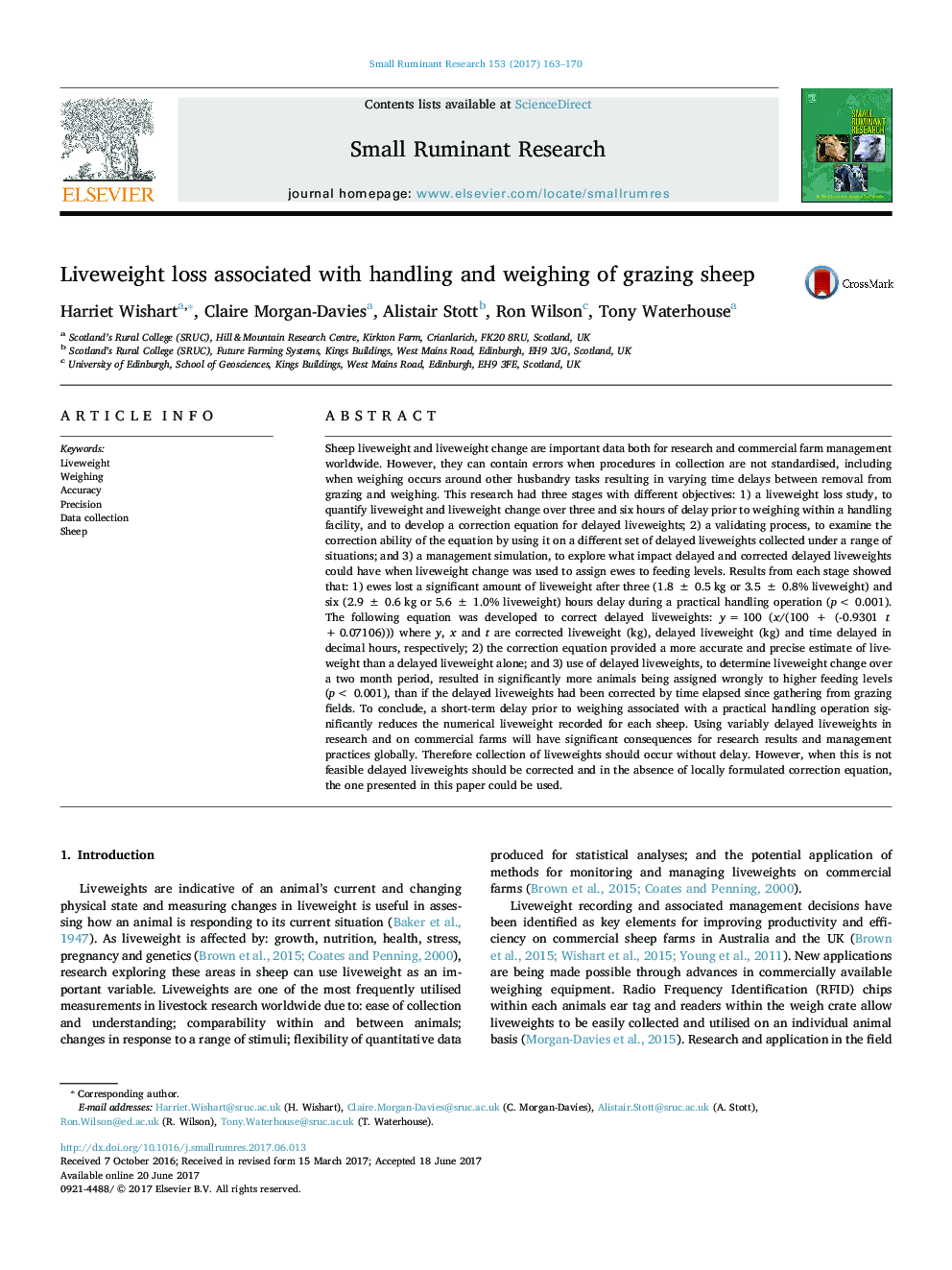| کد مقاله | کد نشریه | سال انتشار | مقاله انگلیسی | نسخه تمام متن |
|---|---|---|---|---|
| 5544084 | 1554339 | 2017 | 8 صفحه PDF | دانلود رایگان |
- Sheep lose significant liveweight during typical on-farm weighing procedures.
- Delayed liveweights should be corrected to a liveweight at the time of pre-gather.
- Using variably delayed liveweights have consequences for management decisions.
- Research should state the methodology used to reduce variation in liveweights.
Sheep liveweight and liveweight change are important data both for research and commercial farm management worldwide. However, they can contain errors when procedures in collection are not standardised, including when weighing occurs around other husbandry tasks resulting in varying time delays between removal from grazing and weighing. This research had three stages with different objectives: 1) a liveweight loss study, to quantify liveweight and liveweight change over three and six hours of delay prior to weighing within a handling facility, and to develop a correction equation for delayed liveweights; 2) a validating process, to examine the correction ability of the equation by using it on a different set of delayed liveweights collected under a range of situations; and 3) a management simulation, to explore what impact delayed and corrected delayed liveweights could have when liveweight change was used to assign ewes to feeding levels. Results from each stage showed that: 1) ewes lost a significant amount of liveweight after three (1.8 ± 0.5 kg or 3.5 ± 0.8% liveweight) and six (2.9 ± 0.6 kg or 5.6 ± 1.0% liveweight) hours delay during a practical handling operation (p < 0.001). The following equation was developed to correct delayed liveweights: y = 100 (x/(100 + (-0.9301 t + 0.07106))) where y, x and t are corrected liveweight (kg), delayed liveweight (kg) and time delayed in decimal hours, respectively; 2) the correction equation provided a more accurate and precise estimate of liveweight than a delayed liveweight alone; and 3) use of delayed liveweights, to determine liveweight change over a two month period, resulted in significantly more animals being assigned wrongly to higher feeding levels (p < 0.001), than if the delayed liveweights had been corrected by time elapsed since gathering from grazing fields. To conclude, a short-term delay prior to weighing associated with a practical handling operation significantly reduces the numerical liveweight recorded for each sheep. Using variably delayed liveweights in research and on commercial farms will have significant consequences for research results and management practices globally. Therefore collection of liveweights should occur without delay. However, when this is not feasible delayed liveweights should be corrected and in the absence of locally formulated correction equation, the one presented in this paper could be used.
Journal: Small Ruminant Research - Volume 153, August 2017, Pages 163-170
